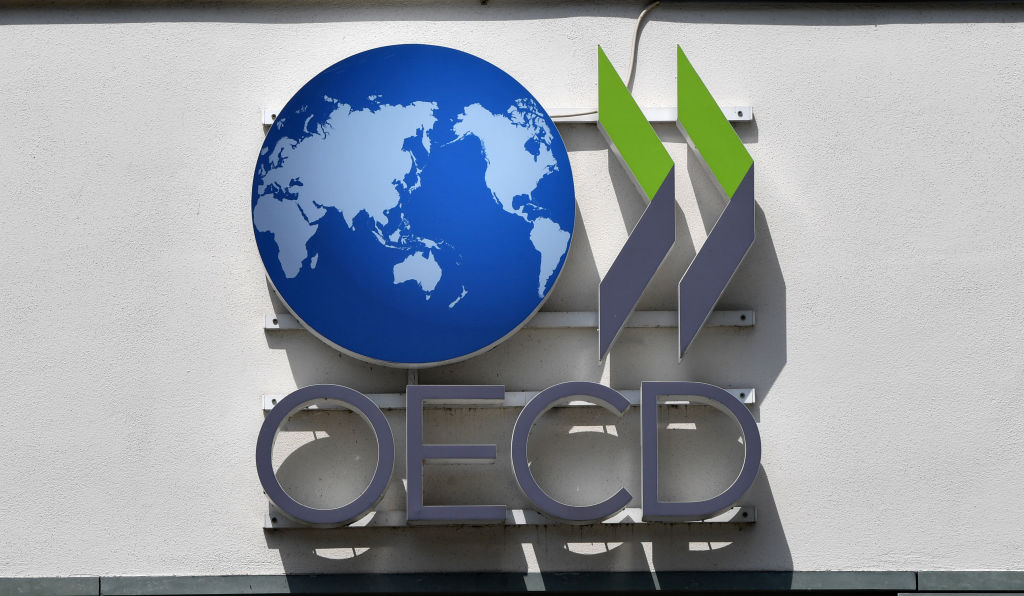Lots of controversy about rates, but according to the OECD Jerome Powell’s Fed and Christine Lagarde’s ECBas well as central banks in general grappling with the scourge of inflation, must continue to carry out their monetary tightening.
In its latest outlook dedicated to the global economy, the Parisian organization has revised upwards its outlook on world GDP growth from +2.2% expected in November to +2.6%.
The OECD has warned that the pace of growth of the world economy will remain below the trends of previous years in both 2023 and 2024, with downside risks.
However, price pressures, ergo inflation, will continue to be more intense than previously expected, due to the increase in costs that has hit the services sector, as well as the high profits discernible in some sectors and the difficulty of companies in finding the necessary workforce.
As a result, the OECD warned, “monetary policy needs to remain tight, until there are signs that inflationary pressures are easing in a lasting way”.
And again, in a message that smacks of a cold shower for Italy and for the euro area, just after the umpteenth increase in 50 basis points arrived from Christine Lagarde’s ECBdespite the fears that continue to haunt the world about the advent of a banking crisis, the OECD expressed itself as follows:
“Further interest rate hikes are still needed in many economies, including those of the United States and the euro area.”
So, a clear message to the ECB and the Fed.
OECD: the new estimates on GDP and inflation
The OECD today announced new estimates for global growth and inflation.
Global GDP it has been revised upwards from 2.2% to 2.6% for 2023.
Revised downwards the outlook on GDP for 2024, from the previously expected growth of 2.9% to 2.7%.
For the G20 countries, the headline inflation projections were slightly reduced from 6% to 5.9%while the G-20 advanced economies’ core inflation estimates they were raised from +3.8% to +4%.
Maxi upgrade for the US GDP outlookrevised up from the +0.5% expected last November to +1,5%.
In the specific case of the United States, the OECD has announced that it will also provide a higher rise in core inflation, equal to +3.9%, compared to the previous forecast of an increase of 3.6%.
Also improved the outlook on the GDP of the Eurozoneexpected now expanding, this year, at the rate of 0.8%compared to the +0.5% expected in November.
Upward magazines too core inflation estimates for the euro area, from +4.7% to +5.2%.
While supporting the need for the ECB and the Fed to make further rate hikes, the OECD has called on central banks to monitor the consequences of their squeezes and therefore to show cautiondue to the risk that the damage caused to the respective economies will prove to be higher than expected, also highlighting the vulnerability of some financial institutions.
According to the Paris organization, governments must also contribute to the central banks’ fight against inflation, making sure that the fiscal stimulus activated against the energy crisis is focused only on those who really need it.
“More targeted aid and a timely reduction of overall aid they would help ensure fiscal sustainability, preserve incentives to consume less energy and limit additional demand stimuli at a time of high inflation”.
The various attentions of the OECD and the warm advice to central banks to convince them to stay the course on rates they come at a time when the markets are also launching their warnings about the risk of a recurrence of a Lehman Brothers event.
Bank crisis, world on the alert with First Republic and Credit Suisse cases
It can be said that the world has changed in just a week.
In the United States Silicon Valley Bank went bankrupt, the second largest US bank to crash since Washington Mutual. And, although several economists have explained the exceptional nature of the Svb case, in these hours we continue to look at the US regional banks, in particular, so much so that the question that traders and investors ask themselves is the following: ECB between inflation and banking crisis. Rate hikes at the end of the line?
The alarm went off again on Wall Street over the regional bank First Republic, which also announced last Sunday that it had secured liquidity of over 70 billion dollars from Federal Reserve e da JP Morgan .
And which has now just been rescued by the eleven largest American banks, among which the names of Goldman Sachs, Citigroup e JP Morgan.
In Europe there is still concern about the fate of Swiss creditthe Swiss systemic bank that sank the stock markets just the day before yesterday, before welcoming the lifesaver launched by Swiss National Bank (SNB), worth 50 billion Swiss francs.
The stock returns to lose ground today, while there are rumors about the option of a combination with UBS.
The problems of American and European banks and above all the risk of a contagion that replicates the Lehman Brothers drama continue to depress the stock markets.
Ma the ECB and the Fed also have the problem of inflationand which, as the OECD has highlighted, has not yet been resolved.
And so, the advice comes from Paris: proceed with the increase in interest rates.
